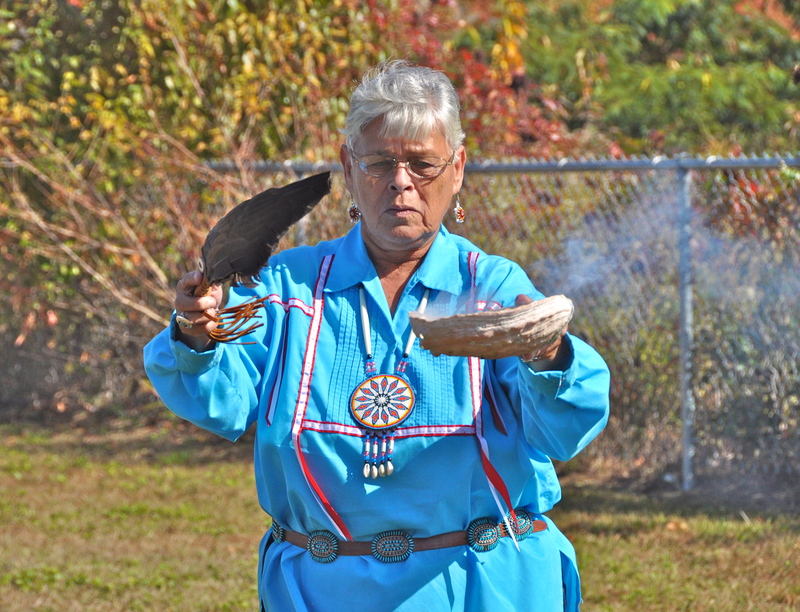The plaque is much more than a historical marker to members of the Coursey-Daisey family. An unveiling ceremony this past weekend was the result of a long struggle to get recognition for the family, who are descendants of Nanticoke Indians who settled in the Cape Region in the 1700s.
The state marker, unveiled Oct. 20 under a beautiful blue autumn sky, is located off Shady Road at the entrance to the Eagle Point community. A small fenced cemetery with a single monument serves as the only reminder of the 23 family members whose remains were buried there between 1853 and 1928.
The marker is one of more than 500 historical markers placed throughout Delaware under a program administrated by Delaware Public Archives.
Although family members are scattered throughout the area now, they have strong roots in the Lewes area. Relatives from at least three states attended the unveiling ceremony.
The cemetery is on land owned by Mills Coursey since 1853. Interred in the burial ground are his son, John Coursey, his immediate family and his descendants, including members of the Daisey family who married into the Coursey family. Family members are direct descendants of Nanticoke Indians who settled in the area in the mid-1700s, arriving from Maryland's Eastern Shore.
Nanticoke Indian Association Assistant Chief William Daisey said family members have always known the location of the cemetery, even though wooden markers rotted away years ago. As parcels around the cemetery were sold off and plans were announced for a large housing project, Daisey said, family members contacted county and state officials to work with developers to ensure the cemetery site was preserved. “We had to work hard to make this happen,” Daisey said.
Daisey said the recognition of the cemetery is a step forward in a long journey for the Nanticokes to establish their identity. For 200 years, Nanticokes struggled to retain their cultural identity as they intermingled with the dominant European-American population who classified Nanticokes as “colored” or “mulatto,” according to wording on the marker.
Daisey said at one time his race was considered “copper.” Long after other Native American tribes were recognized, the Nanticokes labored at the local and state level for recognition of their heritage. Finally in 1881, the Nanticoke Tribe was recognized in the state as a legal entity, and in 1921 they formed the Nanticoke Indian Association, which is known for its annual September powwow and its museum near Oak Orchard.
“We dedicate this marker to our ancestors on this hallowed ground,” Daisey said. “This is our ancestry land. We have survived, and we have thrived as we stay connected to Mother Earth.”























































